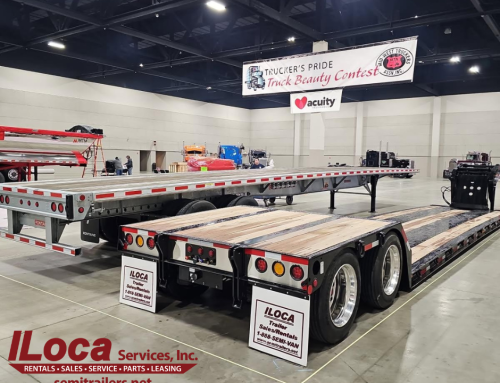
February 1, 2017
Posted By admin
Cargo Securement Laws
As a frequent traveler with transport requirements, a semi driver is no stranger to certain laws made for their line of work. The FMSCA requires many specific guidelines for safe transport, among many other rules. One basic category of legal requirements includes cargo securement laws. Today ILoca will be shining light on to some of these requirements in order to bring more awareness to their importance. Next Wednesday we will follow up with the remainder of these legalities.
Taken directly from the FMSCA website mostly word for word, we have made a list of a few cargo securement rules in a simple, organized placement (1-6) for easy reading.
FMSCA Regulations:
1)Â Â Â Â Â FMCSA requires that cargo securement systems be capable of withstanding the forces associated with following three deceleration/accelerations, applied separately:
- 0.8g deceleration in the forward direction;
- 0.5 g acceleration in the rearward direction; and
- 0.5 g acceleration in a lateral direction.
2) All vehicle structures, systems, parts and components used to secure cargo must be in proper working order when used to perform that function with no damaged or weakened components that could adversely affect their performance.
3) Â Each tiedown must be attached and secured in a manner that prevents it from becoming loose, unfastened, open or released while the vehicle is in transit. All tie downs and other components of a cargo securement system used to secure loads on a trailer equipped with rub rails must be located inboard of the rub rails whenever practicable. Also, edge protection must be used whenever a tiedown would be subject to abrasion or cutting at the point where it touches an article of cargo. The edge protection must resist abrasion, cutting and crushing.
4) FMCSA revised its rules concerning front-end structures or headerboards by changing the applicability of the requirements to cover CMVs transporting cargo that is in contact with the front-end structure of the vehicle.
5) There must be – one tiedown for articles 5 ft or less in length, and 1,100 lbs or less in weight; two tie downs if the article is:
- 5 ft or less in length and more than 1,100 lbs in weight; or greater than 5 ft but less than 10 ft, regardless of weight.
6) The aggregate working load limit of any securement system used to secure an article or group of articles against movement must be at least one-half the weight of the article or group of articles.
We can satisfy your cargo securement needs!
We sincerely hope that this article has helped to bring some awareness to some of the specifications attached to the use of cargo securement objects. So, if you are in need of securement products, we’ve got plenty in stock for you! Feel free to contact us or check our online parts store for your product needs. We’ll continue to state these laws for next week’s entry.
Your Partner For The Long Haul ®
Sources:
https://www.fmcsa.dot.gov/regulations/cargo-securement/cargo-securement-rules




